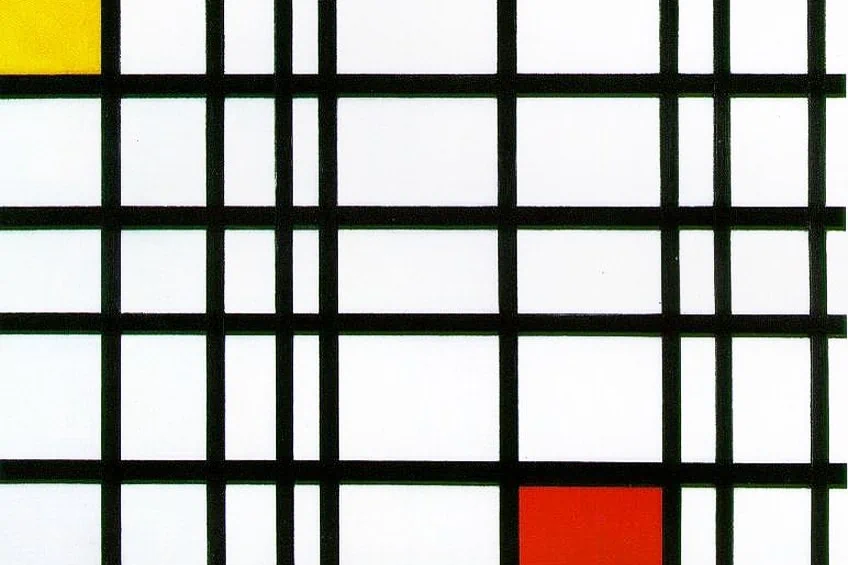Line in Art – Take a Look at Different Examples of Line in Art
In our previous article, we covered an introduction to the basic art elements. Today, we will narrow down our focus to one of the elements of art, line. The article below will provide you with all the insights you need to understand and master the art element of line as well as introduce you to some examples of line in art and the different types of lines in art.
Contents
- 1 The Elements of Art: An Overview
- 2 Building a Line in Art Definition: What Is Line in Art?
- 3 Uses of Line in Art
- 4 Frequently Asked Questions
The Elements of Art: An Overview
The elements of art are important to the way that you make, interpret, and experience art. The basic elements of art are also referred to as the “basic building blocks” of art and include: line, shape, color, form, texture, space, and value. Below, you will find a quick summary of the basic elements of art.
| Art elements | Definition |
| Line in art | Line refers to the path created between two points. Lines vary in shape, length, and width. |
| Shape in art | Shape is characterized by its confines, which are limited to height and width. Shape can be used to create both two-dimensional and three-dimensional objects. |
| Color in art | Color is defined by three defining attributes: hue, value, and intensity (chroma). |
| Form in art | Form is made up of height, width, and depth with an enclosed volume and two-dimensional aspects that render a three-dimensional object. |
| Texture in art | Texture refers to the tactile sensation of an artwork evoked by a visual stimulus that mimics the surface of an object. |
| Space in art | Space is made up of negative and positive space. Space is also the relationship between the main subject of an artwork and the artwork as a whole. |
| Value in art | Value is defined as the darkness and lightness of hue. Value also carries other meanings across economic, social, political, and artistic contexts. |
Building a Line in Art Definition: What Is Line in Art?
When examining which line in art definition to side with, it is important to consider that line is considered one of the earliest forms of mark-making in human history. Many of the world’s most famous portraits make use of lines, alongside other art elements, to define the sitter, characterize the drawing, and bring it to life.
Line as an element of art can be defined as the path that is formed between two points, usually a straight line.
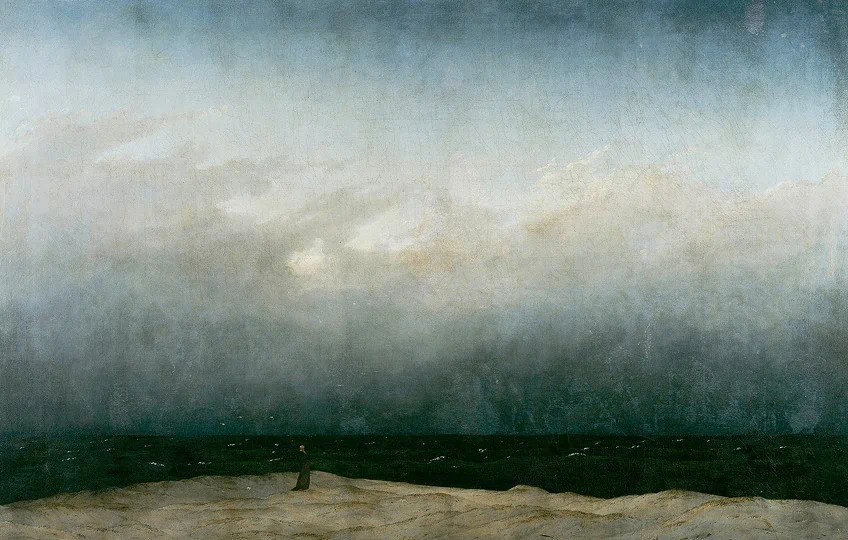
The use of line can also become an artist’s key signature or art style. Many artists make use of lines in a variety of ways, such that it is associated with their characteristic visual aesthetic. To build on our definition of lines in art, let us take a look at some examples of lines in art as well as the different types of lines in art.
Types of Lines in Art
Lines in art can be produced through multiple mediums, ranging from drawing or painting lines on a surface to altering materials such as bronze, plastics, and tape to create the form of a line. Lines can also be found in photography when you decide how to photograph an image and make use of visible angles and shadows to create lines. The element of art, line, can also appear on different planes; vertical, horizontal, diagonal, freeform, curved, or straight.
Lines can carry multiple qualities pertaining to thickness, color, shape, and size that can be maneuvered to create the visual aesthetic of your choice.
Uses of Line in Art
Lines in art can be applied in a variety of ways across painting, sculpture, photography, and drawing. Line, along with the other art elements, can be combined to create different effects. Some of the uses of lines in art are to create movement, guide the eye of the viewer to a focal point, and shade an object. Below, you will find different ways that line is used and illustrated across different artworks.
General Examples of Line in Art
What better introduction to the element of line in art than a visual display of some of the best examples of line in artworks? Below, we will be looking at a few examples of artworks that make use of lines in a general way. Visual learners will enjoy this one!
Two Studies of a Bird of Paradise (1630) by Rembrandt van Rijn
| Artist | Rembrandt van Rijn (1606 – 1669) |
| Date | c. 1630 |
| Medium | Pen and ink |
| Dimensions (cm) | 18.1 x 15.4 |
| Where It Is Housed | Private collection |
This drawing by Rembrandt van Rijn is considered to be a great example of line in art. In Two Studies of a Bird of Paradise (1630), Rembrandt makes use of stark black lines, executed in ink and pen, to illustrate the striking figures of the two birds. Rembrandt uses bold, dark lines to not only contour the birds’ figures and give them shape but also uses the lines to shade the birds’ tails instead of filling them in with diluted black ink.
The heavy use of the dark line also makes the birds seem as though they are floating in the drawing, making them the main subjects of his drawing.
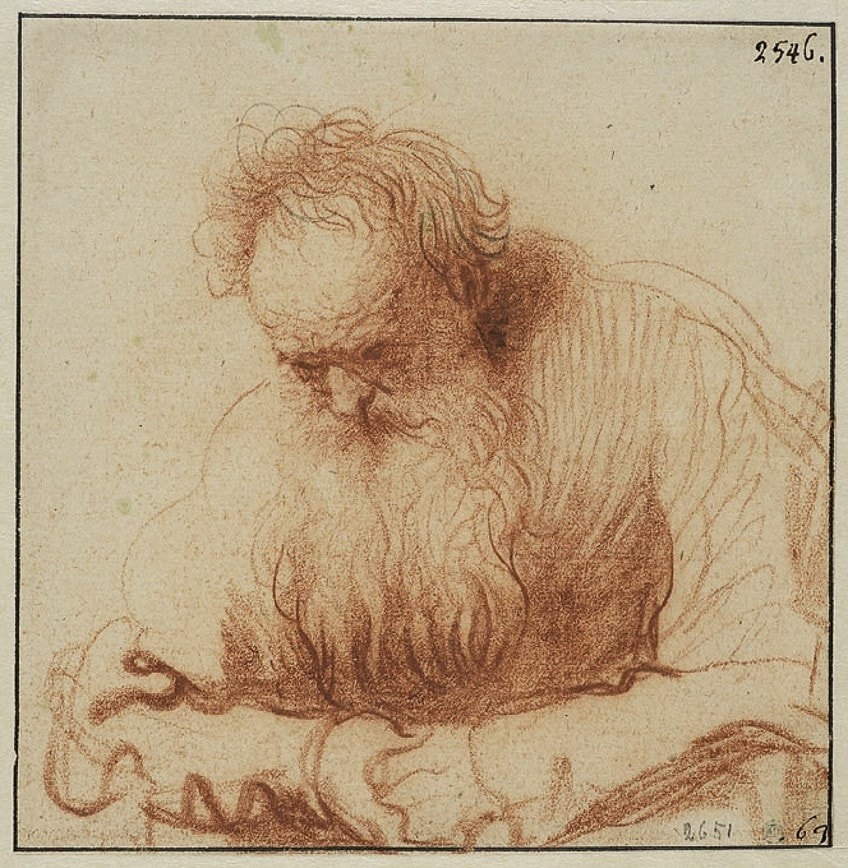
Cornish Slate Ellipse (2009) by Richard Long
| Artist | Richard Long (1945 – Present) |
| Date | 2009 |
| Medium | Slate |
| Dimensions (cm) | 720 x 342 |
| Where It Is Housed | Artist rooms Tate and National Galleries of Scotland |
Crafted out of slate, this massive sculpture by Richard Long makes use of the line to create the shape of an ellipse. Long uses multiple cuboid pieces of slate, measured at 10 centimeters each to create the linear aesthetic and the body of the ellipse. In the work, Long assembled each smaller piece of slate next to each other and at varied angles and sizes to create the ellipse.
This is a perfect example of how lines can be incorporated into sculpture and carry more than just a two-dimensional aesthetic.
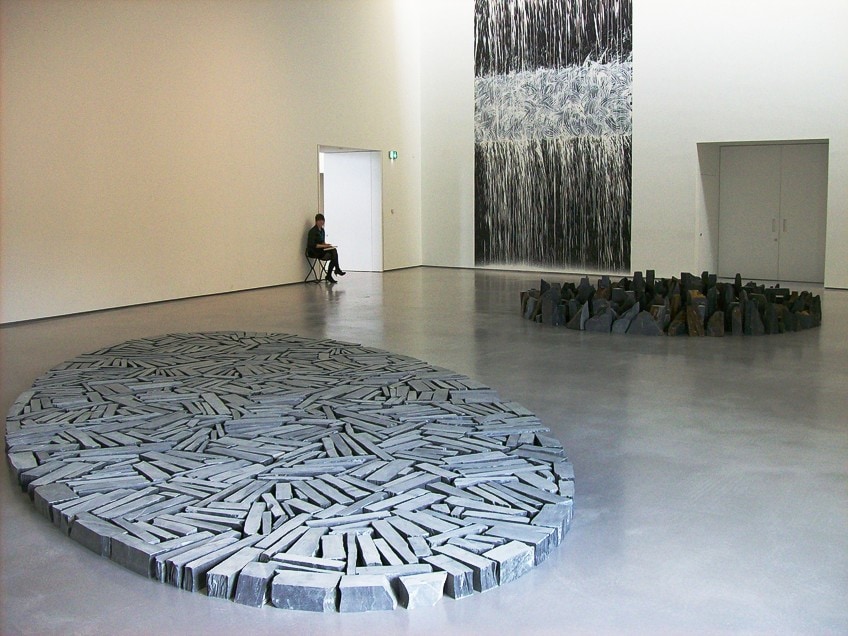
Examples of Vertical and Horizontal Lines in Art
After encountering a brief glimpse of line in art applied generally to drawing and sculpture, we can look at a few examples of line in art concerning artworks that depict the use of horizontal and vertical lines. Horizontal lines refer to lines that join from points located from left to right and vice versa.
Vertical lines follow the direction of north to south and vice versa, along the y-axis and like the horizontal line, it is a straight line that is drawn from top to bottom and back. Below, you will find a few examples of artworks that include horizontal and vertical lines.
Composition with Yellow, Blue, and Red (c. 1937 – 1942) by Piet Mondrian
| Artist | Piet Mondrian (1872 – 1944) |
| Date | c. 1937 – 1942 |
| Medium | Oil on canvas |
| Dimensions (cm) | 72.7 x 69.2 |
| Where It Is Housed | Tate |
When picturing artworks that include horizontal and vertical lines, your mind will easily land on one of the most famous Dutch painters, Piet Mondrian, and his colorful grid-like artwork. Composition with Yellow, Blue and Red (c. 1937 – 1942) is just one such example out of many of his works that make use of a technique used primarily in a form of abstraction called Neo-Plasticism.
Mondrian used this technique to maintain his aesthetic of straight horizontal and vertical lines with primary colors.
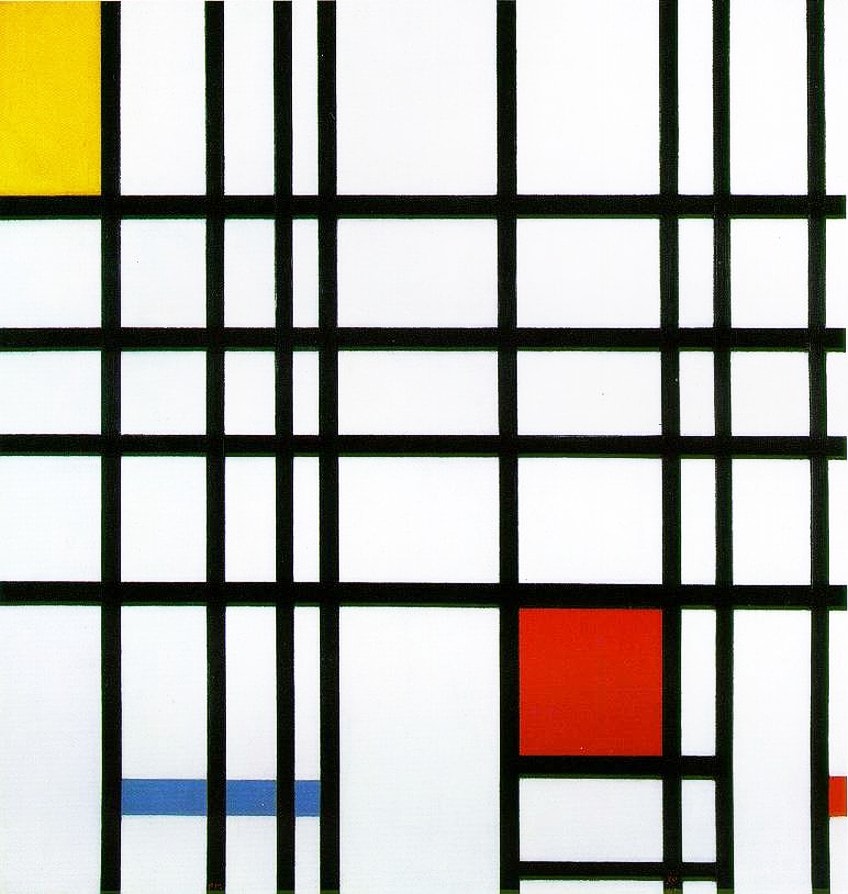
Pitched Planes 167 (2006) by Stephen Maine
| Artist | Stephen Maine (1958 – Present) |
| Date | 2006 |
| Medium | Relief monoprint; woodcut and etching ink on hosho paper |
| Dimensions (cm) | 61 x 48 |
| Where It Is Housed | Ideel art online gallery |
Stephen Maine makes use of the combination of horizontal and vertical lines in his series, Pitched Planes, which gives room for thought on the illusion of a third dimension. Maine incorporates materials that are produced via industrial processes as part of his printing process.
This results in unique prints containing an “optical” blend of hues with multiple layers.
Diagonal Lines in Art
Diagonal lines perform a different visual function as opposed to the other two types of lines: horizontal and vertical. The diagonal line is a line that is also straight, however, it is positioned at an angle to the left or right and is the result of joining two opposing corners on a square. Below are examples of the diagonal line in effect in different art pieces.
The Forge (c. 1817) by Francisco Goya
| Artist | Francisco Goya (1746 – 1828) |
| Date | c. 1817 |
| Medium | Oil on canvas |
| Dimensions (cm) | 181.6 x 125 |
| Where It Is Housed | Frick Collection, New York City |
Depicted in The Forge (1817) by Francisco Goya, is a simple scene showcasing the 19th-century state of the working-class citizens of Spain. The diagonal lines appear from the stance of the man in the foreground holding a metal hammer mid-air to the position of the head of the younger man (or assistant) holding blacksmith tongs.
By viewing the subjects alone, you can begin to see an invisible “X” formed by the subjects and their positions.
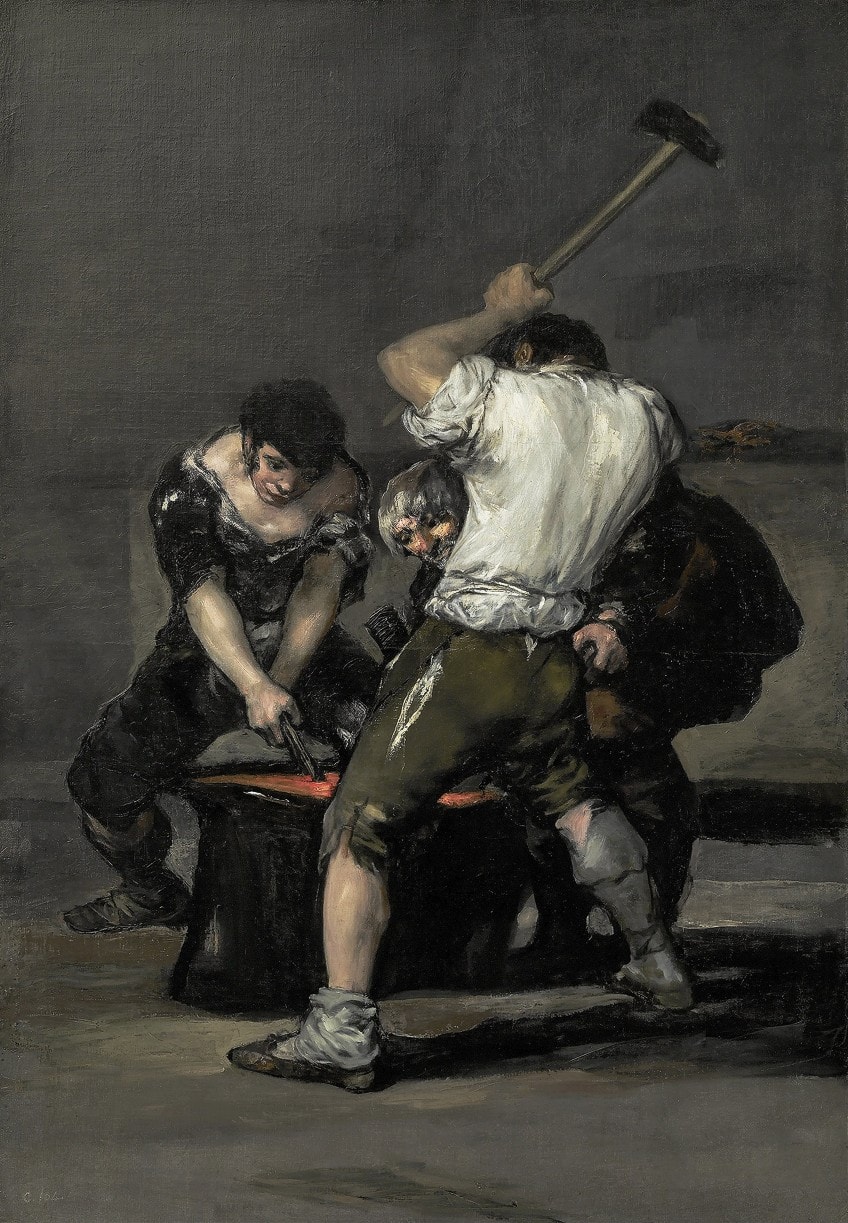
Blue Dancers (1897) by Edgar Degas
| Artist | Edgar Degas (1834 – 1917) |
| Date | c. 1897 |
| Medium | Pastel on paper |
| Dimensions (cm) | 65 x 65 |
| Where It Is Housed | The Pushkin State Museum of Fine Arts, Moscow, Russia |
Blue Dancers (1897) is a rhythmic display of the use of diagonal lines to portray the motion of the young ballerinas. The movement of the ballerinas’ bodies matches the positioning of their heads and this is where we witness the art of the diagonal line.
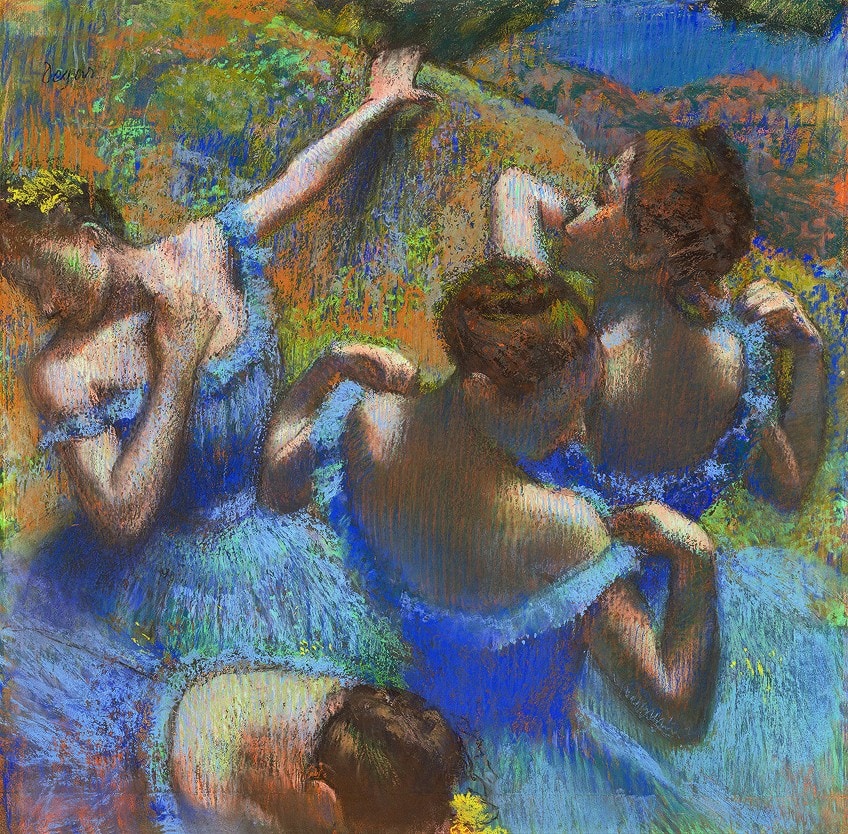
Gesture Lines in Art
While diagonal lines help create a cohesive piece with the presence of multiple subjects, gestural lines, also called contour lines, are the main type of line used to illustrate movement. Often found in many Expressionist and Impressionist artworks, gestural mark-making, when executed correctly, helps resurrect an otherwise “still” scene.
This adds to the evocative nature of the artwork and emotional experience of the viewer. Below are a few examples of gesture lines in art that are sure to linger in your mind.
Naruto Whirlpool, Awa Province (c. 1853) by Utagawa Hiroshige
| Artist | Utagawa Hiroshige (1797 – 1858) |
| Date | c. 1817 |
| Medium | Woodblock print, ink, and color on paper |
| Dimensions (cm) | 35.6 x 24.4 |
| Where It Is Housed | Metropolitan Museum of Art, New York |
A print from the Views of Famous Places in the Sixty-Odd Provinces series by Japanese artist Utagawa Hiroshige, Naruto Whirlpool, Awa Province (c. 1853) is a colorful depiction of a whirlpool in the ocean. The movement of the water in a circular motion is illustrated using gestural lines spiraling downwards, from right to left with the gaps between the contour lines decreasing in size as they reach the center of the whirlpool.
Hiroshige also uses concave lines to give the water a sense of weight and shape.
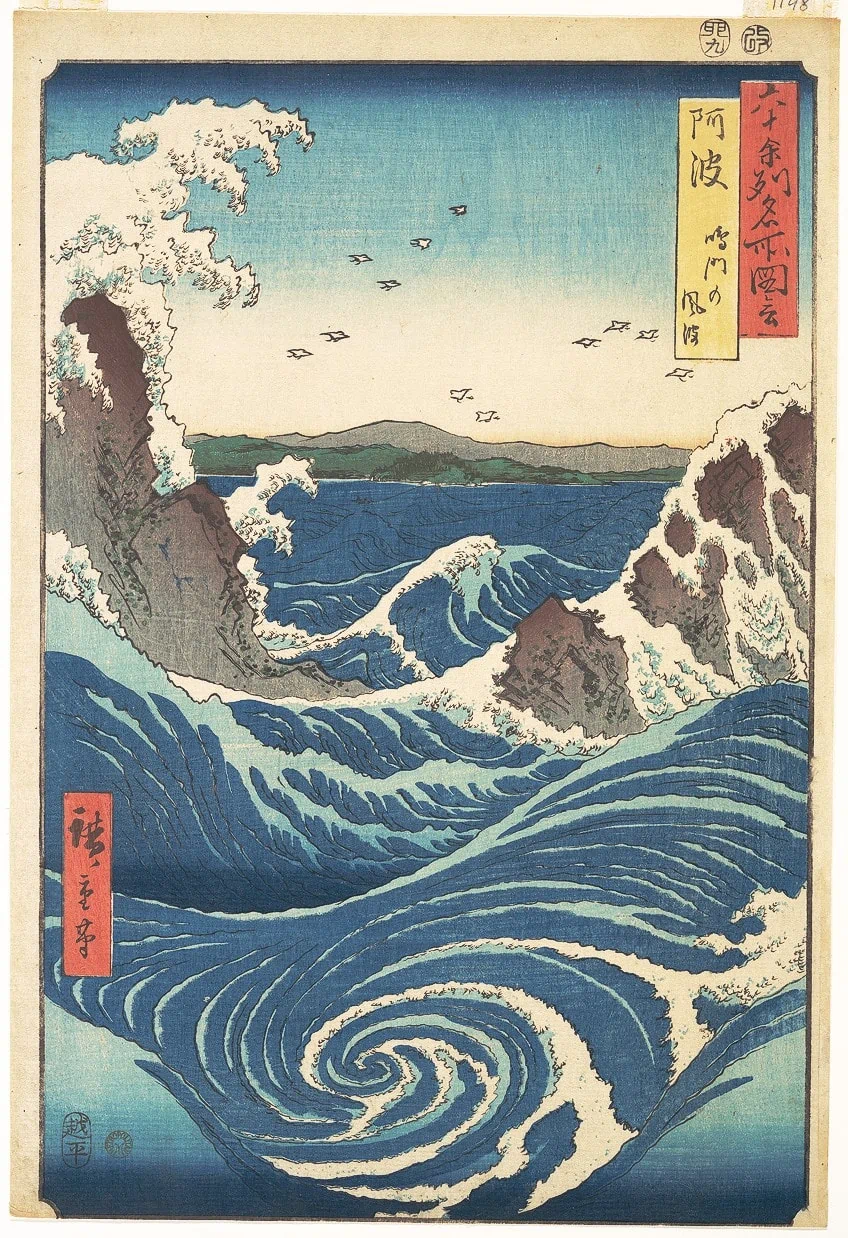
The movement of the lines is highlighted in light blue and can be seen applied very lightly in the white areas of the waves through the repetition of smaller stipple-like lines. What makes this artwork a perfect example of line in art is the regular breaks between different elements in the print.
The background depicting the land contains consistent lines whereas the lines of the sea are varied, indicating the nature of the subject.
Linear Perspective Lines in Art
As one of the basic elements of art, lines also form a part of perspective techniques for drawing. The display of perspective refers to the representation of space as three-dimensional as opposed to a flat, two-dimensional image. Below, you will find a few examples of the art element, line, used in art to illustrate perspective.
The Last Supper (c. 1495 – 1498) by Leonardo da Vinci
| Artist | Leonardo da Vinci (1452 – 1519) |
| Date | c. 1495 – 1498 |
| Medium | Tempera on gesso, pitch, and mastic |
| Dimensions (cm) | 460 x 880 |
| Where It Is Housed | Santa Maria delle Grazie, Milan |
One of the world’s most recognized Italian paintings of the high Renaissance, The Last Supper (1498) by Leonardo da Vinci is a mural that depicts the biblical scene of Jesus Christ at his last supper with the 12 apostles. The scene was executed with much technical skill and attention to line as a linear perspective artwork.
The basis of linear perspective artwork includes two parallel lines that converge at a sole vanishing point, which leaves you with a sense of depth.
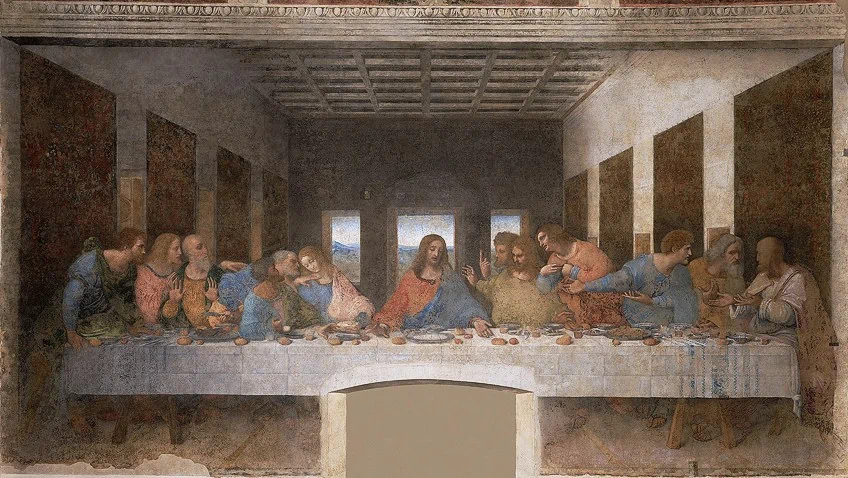
The Road West (1938) by Dorothea Lange
| Artist | Dorothea Lange (1895 – 1965) |
| Date | 1938 |
| Medium | Gelatin silver print |
| Dimensions (cm) | 17.3 x 24 |
| Where It Is Housed | Metropolitan Museum of Art, New York |
Depicting the long stretch of the US 54 located South of New Mexico, Dorothea Lange employs the camera as her medium to draw attention to the perspective of the road. The significance of the road is anchored by the history of the road during the Depression, when families traveled to search for employment in California.
When many people discovered that the conditions of employment were none the better, they ended up leaving and returned to the East.
Textured Lines in Art
Texture is one of the basic elements of art and is characterized by the appearance or surface of a material or object. Texture employs our sense of touch and visually, you can illustrate texture through line. One of the techniques to create texture, as seen in the artwork below, is called cross-hatching.
Cross-hatching involves making hatching lines, which are straight lines drawn at an angle and repeated, and drawing over these in the opposite direction or angle. The width and length of the line in this pattern can influence the texture and tone of the subject.
Melencolia I (1514) by Albrecht Dürer
| Artist | Albrecht Dürer (1471 – 1528) |
| Date | 1514 |
| Medium | Engraving |
| Dimensions (cm) | 24.5 x 19.2 |
| Where It Is Housed | Metropolitan Museum of Art, New York City |
In Albrecht Dürer’s work, the use of textured lines is evident. As the scene is primarily a gloomy one, with the female figure to the right said to be the personification of melancholia, the type of lines used by Dürer to sketch out the rest of the picture adds to the overall heaviness of the image.
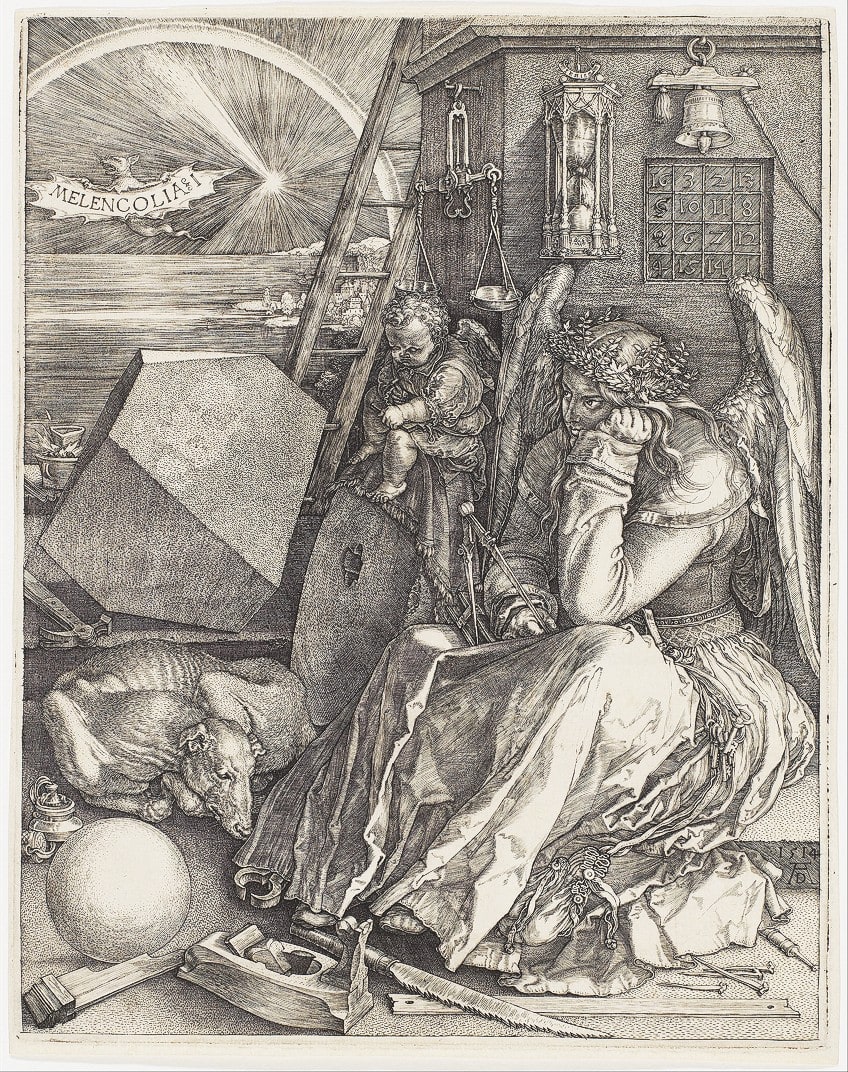
Implied Lines in Art
An implied line is as it suggests – implied and not necessarily present. As we have observed from the various types of lines, lines can be used in many ways to achieve similar visual outputs. The implied line is suggestive and not continuous.
To envision an implied line, see below an example of implied lines (or contours) in A Father Curses his Ungrateful Son (1777) by Jean-Baptiste Greuze.
The Father’s Curse – The Ungrateful Son (1777) by Jean-Baptiste Greuze
| Artist | Jean-Baptiste Greuze (1725 – 1805) |
| Date | 1777 |
| Medium | Brush and black ink with white on blue paper |
| Dimensions (cm) | Unavailable |
| Where It Is Housed | Louvre Museum, France |
The implied line in The Father’s Curse – The Ungrateful Son is seen in the movement enacted by the figures along with the direction of their gazes. The implied line directs your attention to the hands of the father and his son, whose hands almost touch.
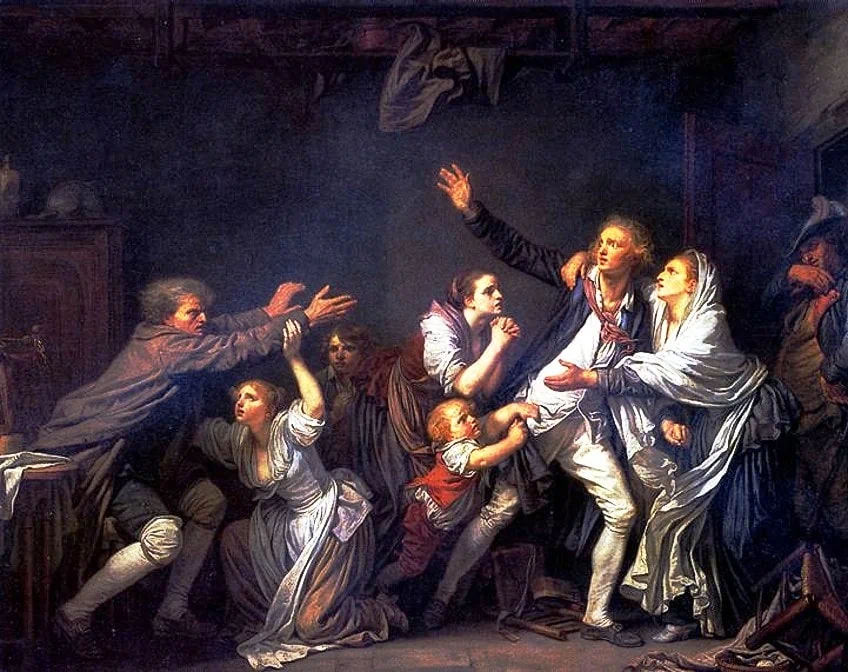
Decorative Lines in Art
Decorative lines are lines that contain a smaller design or motif on the line itself to serve as decor. The thickness of the lines can vary and be used to emphasize an outline of an object. Below is an artwork by Henri Matisse that showcases how decorative lines can be used in painting.
Purple Robe with Anemones (1937) by Henri Matisse
| Artist | Henri Émile Benoît Matisse (1869 – 1954) |
| Date | 1937 |
| Medium | Oil on canvas |
| Dimensions (cm) | 84 x 70 |
| Where It Is Housed | Baltimore Museum of Art |
Here Matisse uses decorative lines to decorate the background walls using continuous straight and wavy lines as if it were a wallpaper. Matisse also uses decorative lines for the motif designs on the tablecloth, as well as the clothing of the woman.
Line as an element of art is extremely important to the foundational planning phase of most artwork and it is therefore vital that you gauge the significance of the different types of line in art. We hope that this article was helpful in helping you get a better idea of line as an art element and its different forms.
Take a look at our line in art webstory here!
Frequently Asked Questions
What Are the Different Types of Lines in Art?
The different types of lines in art are horizontal lines, vertical lines, gesture or contour lines, linear perspective lines, diagonal lines, implied lines, emphasis lines, decorative lines, and repetitive lines.
What Is Line in Art?
Line in art refers to the basic art element defined by the path that is formed from one point to another. Line in art can vary from color to width and length to evoke different responses in the viewer or to illustrate a visual illusion.
What Is Line Art?
Line art refers to the art genre characterized by artwork containing straight or curved lines against a neutral background to represent two- or three-dimensional subjects or objects. Line art is generally considered visually monochromatic.
Jordan Anthony is a Cape Town-based film photographer, curator, and arts writer. She holds a Bachelor of Art in Fine Arts from the University of the Witwatersrand, Johannesburg, where she explored themes like healing, identity, dreams, and intuitive creation in her Contemporary art practice. Jordan has collaborated with various local art institutions, including the KZNSA Gallery in Durban, the Turbine Art Fair, and the Wits Art Museum. Her photography focuses on abstract color manipulations, portraiture, candid shots, and urban landscapes. She’s intrigued by philosophy, memory, and esotericism, drawing inspiration from Surrealism, Fluxus, and ancient civilizations, as well as childhood influences and found objects. Jordan is working for artfilemagazine since 2022 and writes blog posts about art history and photography.
Learn more about Jordan Anthony and about us.
Cite this Article
Jordan, Anthony, “Line in Art – Take a Look at Different Examples of Line in Art.” artfilemagazine – Your Online Art Source. August 23, 2022. URL: https://artfilemagazine.com/line-in-art/
Anthony, J. (2022, 23 August). Line in Art – Take a Look at Different Examples of Line in Art. artfilemagazine – Your Online Art Source. https://artfilemagazine.com/line-in-art/
Anthony, Jordan. “Line in Art – Take a Look at Different Examples of Line in Art.” artfilemagazine – Your Online Art Source, August 23, 2022. https://artfilemagazine.com/line-in-art/.


